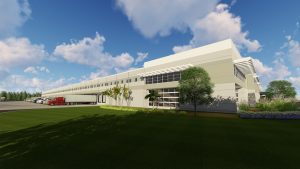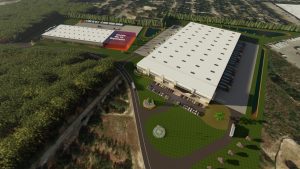Improving Business in the Wilmington Region
AT-PORT DISTRIBUTION MODEL ADVANCES
Given the global nature of modern commerce, port facilities now play a key role in the movement of finished goods between producers and consumers. As North Carolina’s gateway to the world’s marketplace, Greater Wilmington is well-suited to prosper from this trend. An “at-port” distribution center model moves the port closer to achieving its full potential as a regional economic engine.
“We believe Wilmington is Savannah 20 years ago,” says Chance Raehn, vice president at Chesterfield LLC. The company, with offices in Jacksonville, Fla., and Savannah, Ga., announced plans in November to build 425,000 square-feet of build-to-suit space at the Port of Wilmington. “Hopefully our project will be a catalyst for new development and new growth in Wilmington.”
The new space will be developed on two Greenfield parcels owned by the State Ports Authority. Both imports and exports will move through the facility, says Raehn, whose firm develops office and industrial properties throughout the United States. “It’s not exclusively for retail distribution,” he explained. “Opportunities will be within manufacturing, assembly, retail, cold storage – any industry sector that uses the Port of Wilmington.” The facilities will be designed to accommodate multiple tenants.
Wilmington Business Development will be a marketing partner in the initiative. “It’s a team effort between local and regional developers, power companies and the Ports Authority,” says Raehn, whose clients have included Target Corporation, IKEA and Gulfstream Aerospace. North Carolina’s Southeast also is a partner. “Their roles will be to help market and attract tenants for the building,” Raehn says.
Given its national reputation and decades of development experience, Chesterfield’s interest in Greater Wilmington confirms the thinking of regional leaders about the port’s economic development potential. “They are well-known for their work in the Southeast, especially in the Savannah market where they continue to build up that at-port model,” says Cliff Pyron, account executive at the NC Ports Authority. “The fact that they see parallels between Wilmington and Savannah and believe in the region so much so that they are willing to build on spec is very exciting.”
Recent years have witnessed significant investments at the Port of Wilmington. The expansion of its turning basin, for example, enables far larger container ships to access the port. It can now accommodate 10,000 Twenty-Foot Equivalent Unit (TEU) vessels, up from a maximum of just 4,500 TEUs just three years ago.


